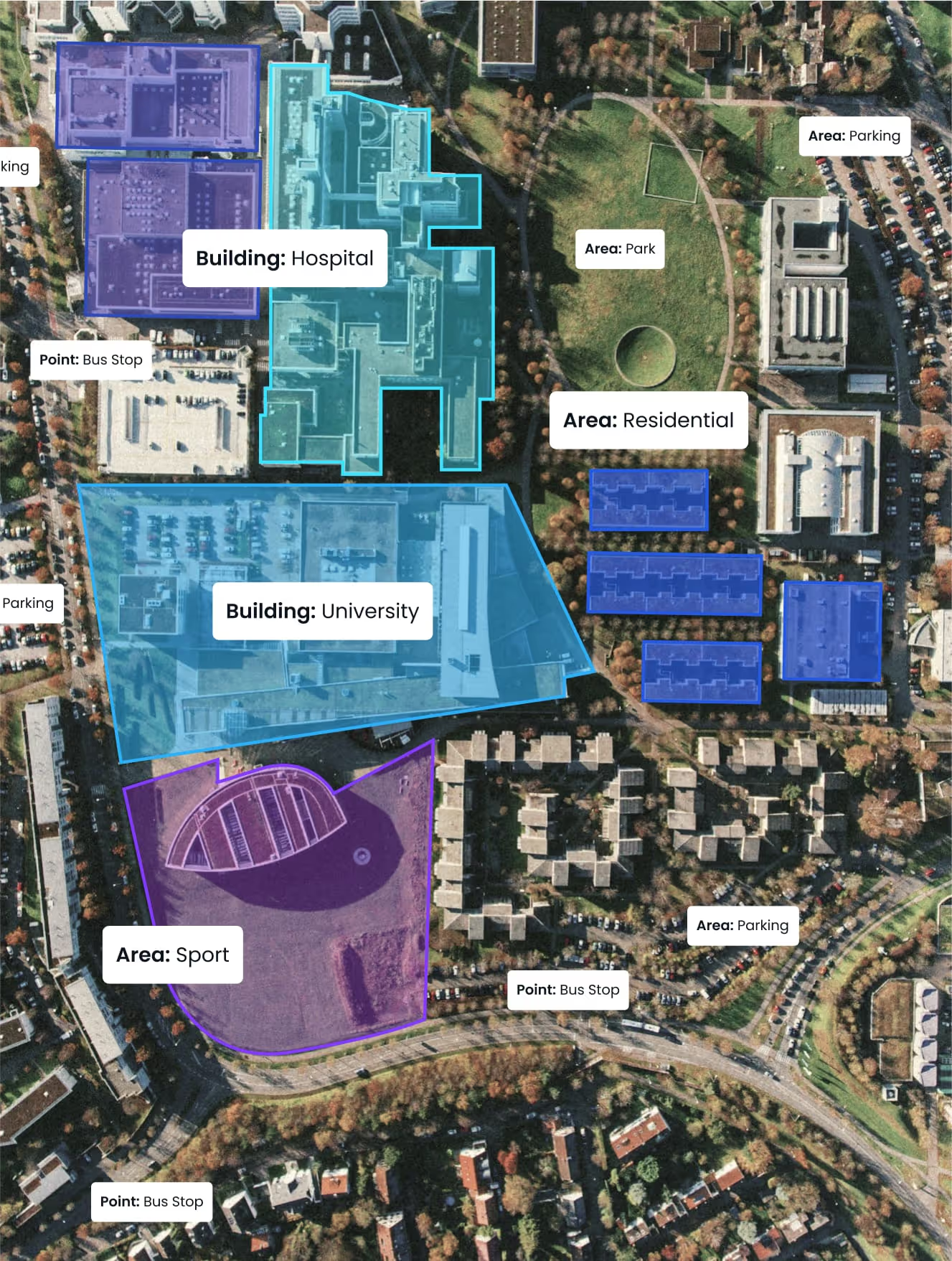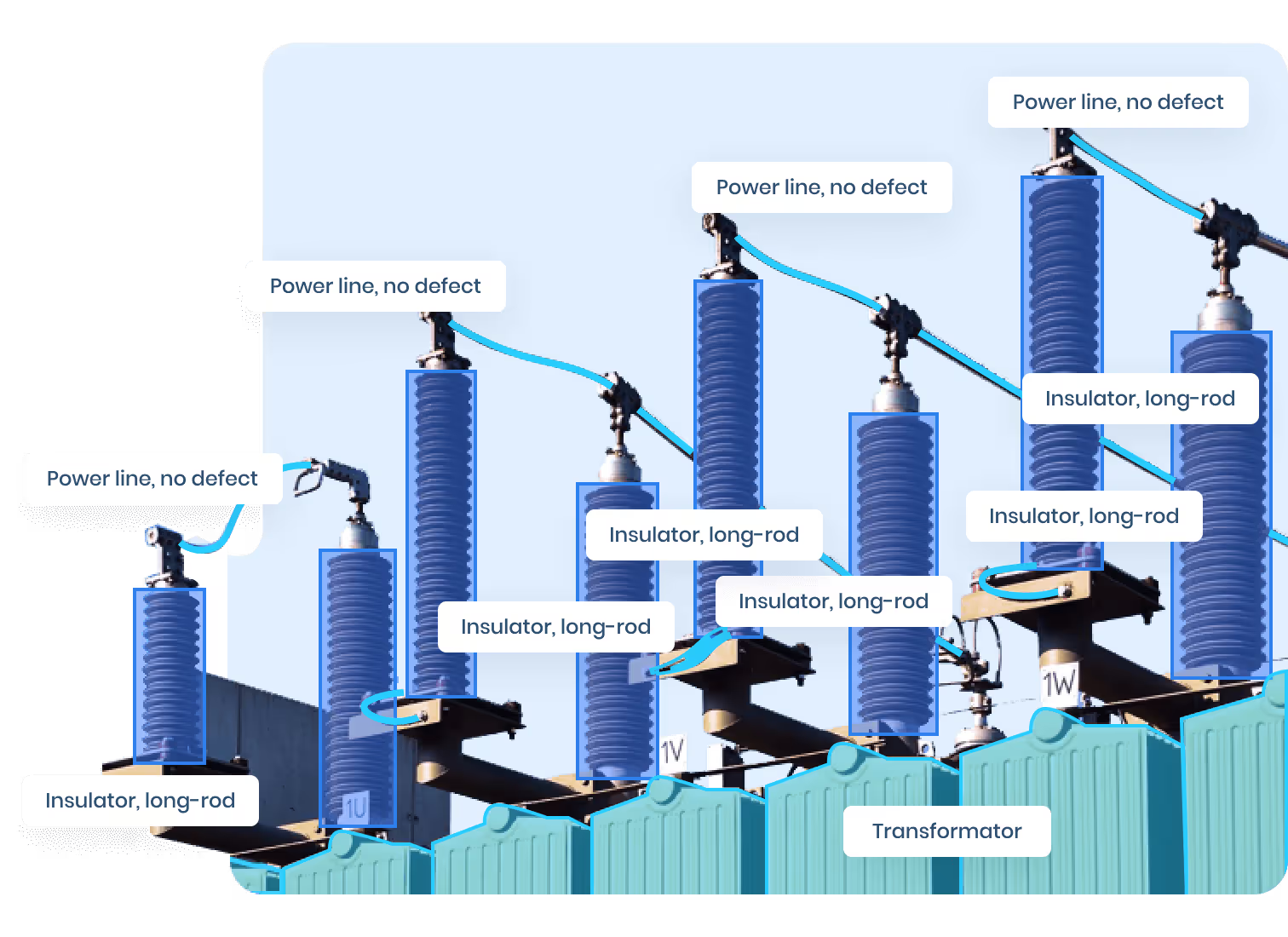Why Clothing Annotation Matters in Fashion AI
AI in fashion thrives on visual data. To analyze, search, or recommend apparel effectively, algorithms must understand the what, where, and how of garments. That’s where annotation comes in.
Top Applications of Fashion Image Annotation:
- 🔎 Visual search (e.g., “Find similar shirts”)
- 🎯 Attribute-based filters (e.g., “Sleeveless, red, V-neck dresses”)
- 🤖 Personalized recommendations
- 🛒 Automated tagging and inventory management
- 🧠 AI stylists and outfit generators
Without properly labeled data, even the most sophisticated neural network will be guessing blindly. Structured annotation is the bridge between human perception and machine learning comprehension.
📸 What Attributes and Accessories Should You Label?
Depending on your AI model’s use case, here are the most common categories of clothing attributes and accessories worth labeling:
🔹 Apparel Type
- T-shirt, blouse, hoodie, dress, trousers, jeans, jacket, etc.
🔹 Color
- Base color(s), patterns, gradients (e.g., red, black-and-white stripe)
🔹 Pattern
- Floral, geometric, plaid, solid, animal print, tie-dye
🔹 Fabric or Material
- Cotton, denim, wool, silk, leather, mesh
🔹 Sleeve Length
- Sleeveless, short, long, three-quarter
🔹 Neckline
- V-neck, crew, turtleneck, off-shoulder, halter
🔹 Fit and Style
- Slim-fit, loose, oversized, cropped, high-waisted
🔹 Length
- Mini, midi, maxi (for skirts and dresses), or short/long pants
🔹 Accessories
- Handbags, scarves, sunglasses, hats, belts, jewelry, watches
🔹 Gender and Age Group
- Men, women, children, unisex
✅ Tip: Always define a clear attribute taxonomy before starting your labeling project to ensure consistency across annotators.
🧰 Types of Annotations for Fashion AI
Different tasks require different annotation methods. Here’s how they apply to fashion image data:
1. Bounding Boxes
Used for localizing clothing items or accessories in a scene.
✅ Example: Highlighting a handbag on a model walking a runway.
2. Polygon Annotation
Ideal for segmenting irregular garment shapes more precisely.
✅ Example: Annotating the flowy hemline of a dress.
3. Semantic Segmentation
Each pixel is classified into categories like “shirt,” “pants,” or “hat.”
✅ Example: Powering virtual try-on systems.
4. Keypoint Annotation
Used for posture estimation or fitting purposes. Points may include shoulders, waist, elbows, etc.
✅ Example: Detecting how a jacket drapes over a shoulder.
5. Image-level Classification
Labeling a photo with attributes like “denim,” “cropped,” or “summer collection.”
✅ Example: Auto-tagging for search or filters.
🧪 Best Practices for Labeling Clothing Attributes
High-quality annotations demand more than just drawing boxes. Here's how to do it right:
✅ Consistency Is Key
- Use standardized labels and avoid synonyms (e.g., always use “short sleeve,” not “short-sleeved” or “half sleeve”)
- Train annotators on clear guidelines with examples
✅ Layered Annotation
- Label both macro (e.g., “dress”) and micro (e.g., “sleeveless,” “floral print”) attributes
✅ Attribute Co-occurrence Handling
- Allow multi-label classification (e.g., a shirt can be both “striped” and “long-sleeve”)
✅ Avoid Background Noise
- Focus on the main item. Use segmentation to exclude accessories if irrelevant to your task
✅ QA and Review
- Implement at least 10% cross-review for quality control
- Use inter-annotator agreement scores to measure label reliability
📊 Tools for Clothing and Fashion Annotation
Here are popular annotation tools that support advanced fashion use cases:
Known for its intuitive user interface and strong collaborative workflows. Supports a range of annotation types including polygons and segmentation.
✅ Best used for: Enterprise-level fashion datasets where speed, team collaboration, and precision are key.
Offers advanced segmentation tools and powerful auto-annotation capabilities. Designed for speed and scalability.
✅ Best used for: E-commerce cataloging, where accurate segmentation of apparel and accessories at scale is essential.
An open-source tool with a robust feature set and high customizability. Offers strong support for video and image annotation.
✅ Best used for: Academic research or teams with budget constraints that require custom workflows.
Combines ML-assisted annotation with built-in QA workflows, making it suitable for large annotation operations.
✅ Best used for: High-volume labeling projects, especially when speed and quality control are both priorities.
Offers strong ontology and taxonomy management, making it ideal for multi-label and hierarchical datasets.
✅ Best used for: Annotating fine-grained clothing attributes and use cases with medical or multi-domain overlap.
Flexible, open-source tool with support for a wide range of data formats. Integrates easily into custom ML workflows.
✅ Best used for: Internal machine learning pipelines that require full control over annotation format and behavior.
🎯 Popular Fashion Datasets You Can Use
If you’re just starting out or need to fine-tune your model with public data, try these:
- DeepFashion – Over 800,000 annotated images with clothing attributes and landmarks
- Fashionpedia – Includes segmentation masks and detailed fashion taxonomies
- ModaNet – Street fashion dataset with polygons
- Fashion-MNIST – Simple grayscale dataset (for educational purposes)
- iMaterialist Fashion – Kaggle dataset with multiple attributes per item
Combine multiple sources to create a richer training base—and don’t forget to clean and normalize labels!
💥 Common Challenges in Fashion Annotation
Despite the tools and guidelines, clothing annotation comes with its own set of headaches:
1. Attribute Ambiguity
- Is it a “crop top” or a “bralette”? Subjectivity leads to inconsistent labels.
2. Occlusion
- Accessories or overlapping garments can hide key features.
3. Low Resolution or Motion Blur
- Street or runway footage often lacks the sharpness needed for fine-grained labels.
4. Multimodal Overlap
- Clothes change shape when worn. What looks like “tight-fit” when folded may be “loose” on a model.
5. Lighting and Shadow
- Can alter color perception or mask texture/pattern detail.
🧠 Solution: Provide annotators with context images and always allow for “uncertain” or “ambiguous” flags in the interface.
🧠 How AI Uses Annotated Fashion Data
Annotation isn't just about labeling for the sake of organization—it’s about giving machines a functional visual vocabulary. When fashion images are annotated with accurate metadata, AI models gain the context needed to understand what garments look like, how they’re worn, and how they relate to one another in real-world settings.
1. 🔎 Visual Similarity Search
Annotated images allow convolutional neural networks (CNNs) to learn visual similarity across garments—think of “Show me more like this.” These systems rely on high-quality annotations to fine-tune feature extraction layers.
Use cases:
- A shopper uploads a picture of a dress they saw in a magazine.
- The AI uses bounding boxes and multi-label attributes (e.g., “red,” “off-shoulder,” “floral”) to find matching products in the inventory.
- Tools like ASOS Style Match or Google Lens apply these principles.
2. 🎯 Personalized Fashion Recommendations
Recommendation engines learn more about customer preferences when item-level annotations are linked with user engagement data.
For example:
- A customer frequently clicks on “high-waisted, black jeans.”
- The system identifies a pattern in preferences across annotated attributes and begins ranking similar items higher in future sessions.
- Deep learning models like neural collaborative filtering are trained using these annotated attribute vectors.
This results in:
- 🔄 Higher relevance in recommendations
- 👗 Discovery of niche or hard-to-categorize items
- 🔁 Fewer returns due to better fit and style alignment
3. 🧥 Virtual Try-On and Fit Simulation
Virtual try-on systems use annotated garment data to simulate how clothes fit, move, and layer on a body. They rely on:
- Segmentation masks to isolate garments
- Keypoint annotations for human pose estimation
- Fabric and size attributes for realistic cloth physics simulation
Companies like Zeekit (acquired by Walmart) and Snap's Camera Kit for AR try-on are leading the way in merging annotation with real-time rendering engines.
4. 📦 Smart Tagging and Inventory Management
AI models trained on annotated fashion data help auto-tag and classify thousands of SKUs in bulk.
Benefits:
- Cuts manual tagging time by up to 90%
- Enables faceted navigation (e.g., “show me short-sleeve denim tops under $50”)
- Enhances supply chain and restocking logic by tracking style performance
These systems often integrate with platforms like Shopify or in-house ERP tools for seamless automation.
5. 🔮 Fashion Trend Forecasting
By analyzing time-stamped annotated data from social media, streetwear blogs, or e-commerce feeds, AI models can forecast emerging fashion trends.
For instance:
- A spike in the annotated attribute “cargo pants” in user-uploaded images
- Rising popularity of “oversized blazers” in influencer content
- Sentiment analysis from captions + visual tags (e.g., “cute,” “trendy,” “must-have”)
Such insights help buyers and designers make inventory and design decisions months in advance.
6. 📊 Demographic and Behavioral Insights
Annotations help correlate visual preferences with age, location, gender, and behavior. When integrated with user data (ethically and in compliance with privacy laws), this enables:
- Targeted product design
- Cultural tailoring of campaigns
- Global style diffusion tracking
🌍 Real-World Use Cases
These are not theoretical possibilities—leading fashion platforms and tech innovators are already transforming their operations with annotated fashion data.
🛍️ 1. Zalando: The "Fashion DNA" Vector
Zalando built a “Fashion DNA” embedding system using hundreds of labeled clothing attributes per SKU. Each item is represented by a high-dimensional vector capturing its style, color, cut, and other semantic features.
They combine this data with customer behavior (browsing, clicks, returns) to:
- Tailor recommendations
- Enable outfit generation
- Reduce returns by matching style profiles
A 2019 paper from Zalando titled “Learning Fashion Compatibility with Bidirectional LSTMs” revealed that annotated garments improved accuracy in pairing tops with bottoms by over 30%.
📱 2. Pinterest Lens: From Inspiration to Purchase
Pinterest’s Lens tool allows users to take a photo and instantly find similar products across the platform. It leverages annotations to match:
- Visual features (color, texture, shape)
- Semantic categories (e.g., “biker jacket,” “pleated skirt”)
- Accessories like bags and sunglasses
The AI behind Lens uses:
- Object detection (bounding boxes)
- Visual embeddings from CNNs
- Style filters trained on annotated fashion datasets
🧠 3. Stitch Fix: Human Stylists + AI Collaboration
Stitch Fix employs stylists who use an internal tool powered by fashion AI. They combine personal preferences and behavioral data with annotated item catalogs to offer:
- Custom-curated outfits
- Feedback loops (ratings, likes, returns) to refine model performance
Stitch Fix’s model famously blends human curation with AI augmentation, and the annotation pipeline fuels both arms.
🛒 4. Amazon StyleSnap: Deep Learning Meets Fashion Discovery
Amazon’s StyleSnap lets users upload a photo and find similar-looking clothing items.
Its deep learning backend uses:
- Attribute-rich image labels
- Vectors trained on similarity using Siamese networks
- Multi-label classification to understand textures, fits, and accessories
Amazon's infrastructure depends on large-scale fashion annotation to power this seamless shopping experience across millions of products.
🧵 5. Farfetch: Building the Fashion Knowledge Graph
Farfetch uses annotated metadata to structure a “fashion knowledge graph”—a semantic network connecting:
- Products to style types
- Designers to aesthetics
- Colors to seasonal preferences
This allows for:
- Advanced filtering
- Style compatibility checks
- Intelligent product bundling
By combining NLP (for descriptions) and Image Annotation, they create a multi-modal understanding of fashion inventory that boosts conversion and user satisfaction.
🔚 Final Thoughts
Accurate annotation of clothing attributes and accessories is the cornerstone of fashion AI success. Whether you're building search, recommendation, or automation tools, the depth and precision of your annotations will directly influence model performance.
From segmentation masks on silk scarves to multi-attribute tagging of layered winter outfits, every pixel and label counts. With the right tools, datasets, and guidelines, you can craft powerful training pipelines that transform how fashion is consumed, searched, and sold.
📢 To contact us
Are you ready to scale your fashion AI pipeline with expertly annotated data?
👉 Partner with DataVLab for high-quality clothing and accessory annotation—backed by QA workflows, industry-standard formats, and scalable solutions tailored to your AI goals.
📌 Related: Visual Search in E-Commerce: How Image Annotation Boosts Product Discovery
📬 Questions or projects in mind? Contact us





